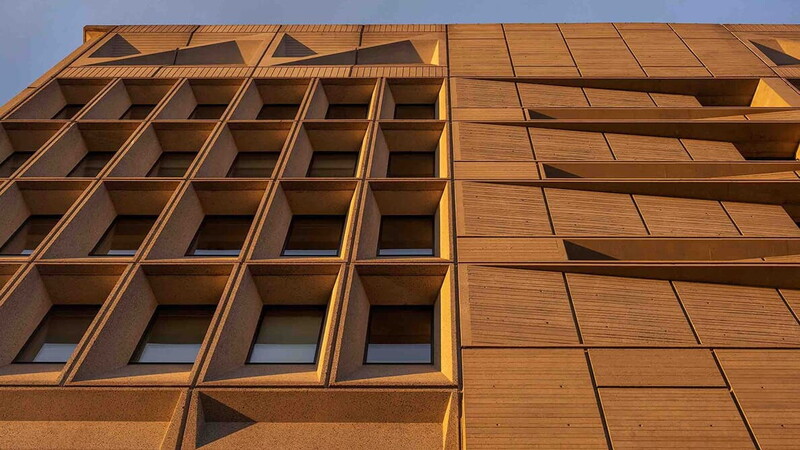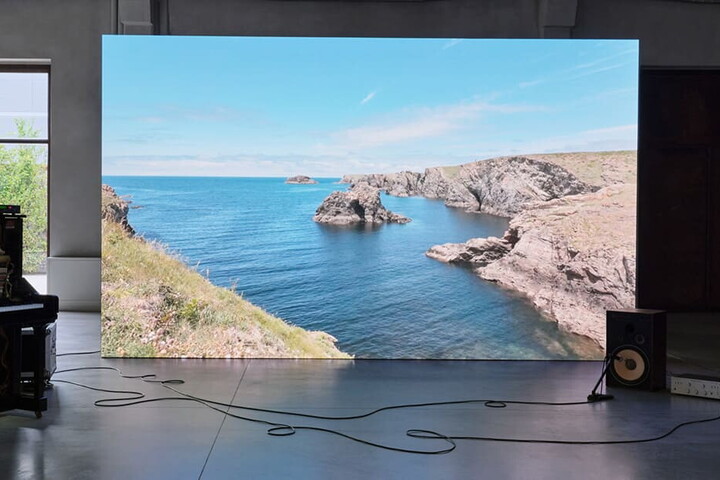When most people think of Pirelli and architecture, their minds instinctively turn to Milan: the soaring Pirelli Tower, an international symbol of postwar progress and design excellence; or the beautiful Pirelli headquarters in the Bicocca neighborhood, a striking glass structure that surrounds what was once the cooling tower used for Pirelli's cable manufacturing, now transformed into a state-of-the-art auditorium.

Yet, across the Atlantic, quietly standing alongside Interstate 95 in New Haven, Connecticut, is another architectural marvel with deep ties to the Pirelli legacy: the Armstrong Rubber Company Building, now more widely known as the Pirelli Building.
Designed by the Bauhaus-trained modernist master Marcel Breuer and built between 1968 and 1969, the building is a raw and dramatic expression of Brutalist architecture. For decades, it remained one of the most striking—and mysterious—structures on the East Coast. Today, it has been given a new life, transformed into the Hotel Marcel, an award-winning sustainable hotel that honors its architectural pedigree while pointing boldly toward the future.

Pirelli and the Architecture of Innovation
Pirelli has always stood at the intersection of industry, culture, and design, pushing boundaries in technology and in art. When the company acquired Armstrong Rubber in 1988, the New Haven building was rebranded as the Pirelli Building, giving the company a bold and unmistakable presence in the United States. Its distinctive form—a hovering office slab above a base that once housed testing labs—was more than an industrial facility. It became a symbol of Pirelli's global vision: powerful, international, and unapologetically modern.
Much like its sibling in Milan, the New Haven Pirelli Building wasn't designed to blend in, it was made to stand out. It still serves as a kind of concrete billboard for the ideals of the 20th century: design as identity, architecture as cultural statement.

A Masterpiece Reborn: From Corporate Headquarters to Hotel Marcel
Pirelli sold the building in 2003 (to IKEA), and it remained unused until 2019, when architect Bruce Becker purchased the premises and began transforming it into a hotel. In 2022, it reopened as Hotel Marcel, part of the Tapestry Collection by Hilton.
After years of vacancy and partial demolition, the building seemed at risk of being forgotten. But in 2022, a remarkable transformation began. The structure was reborn as Hotel Marcel, named after its architect, and repositioned as one of the most sustainable hotels in the United States. Powered entirely by solar energy and designed to operate as a net-zero building, the hotel is not only a restoration: it's a reinvention.
With this reinvention, the building's spirit of innovation and modernism is preserved and extended. Hotel Marcel keeps many of Breuer's original features intact: exposed concrete, minimalist interiors, and monumental form, while also introducing new layers of comfort, technology, and environmental responsibility.

Architecture as Brand, Architecture as Culture
Pirelli's relationship with architecture has always gone beyond utility. From Milan to New Haven, the brand has long supported the creation of buildings that reflect vision, ambition, and artistry. The Pirelli Building in New Haven is a particularly rich example of this approach: a place where a bold industrial vision met the avant-garde of global architecture.
Today, Hotel Marcel carries forward this legacy, welcoming travelers not just into a hotel, but into a piece of living history. It embodies the convergence of architecture and culture that Pirelli has championed for over a century.
In a world where so many corporate buildings are forgettable, the Pirelli Building stands as a monument to what happens when design, industry, and identity converge. And now, as a hotel, it invites the public inside, not just to stay, but to experience a space where innovation and artistry have always driven the narrative.




